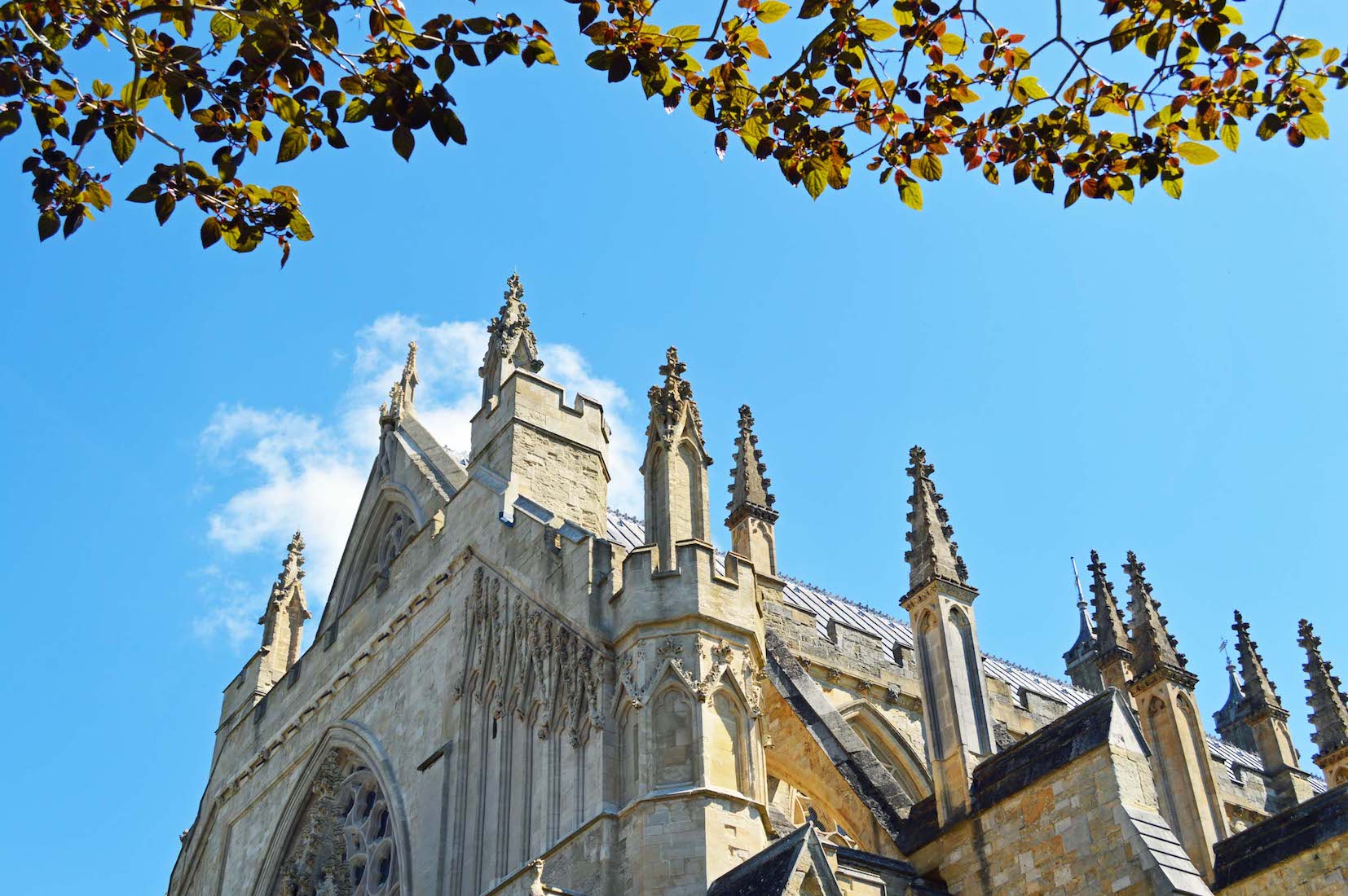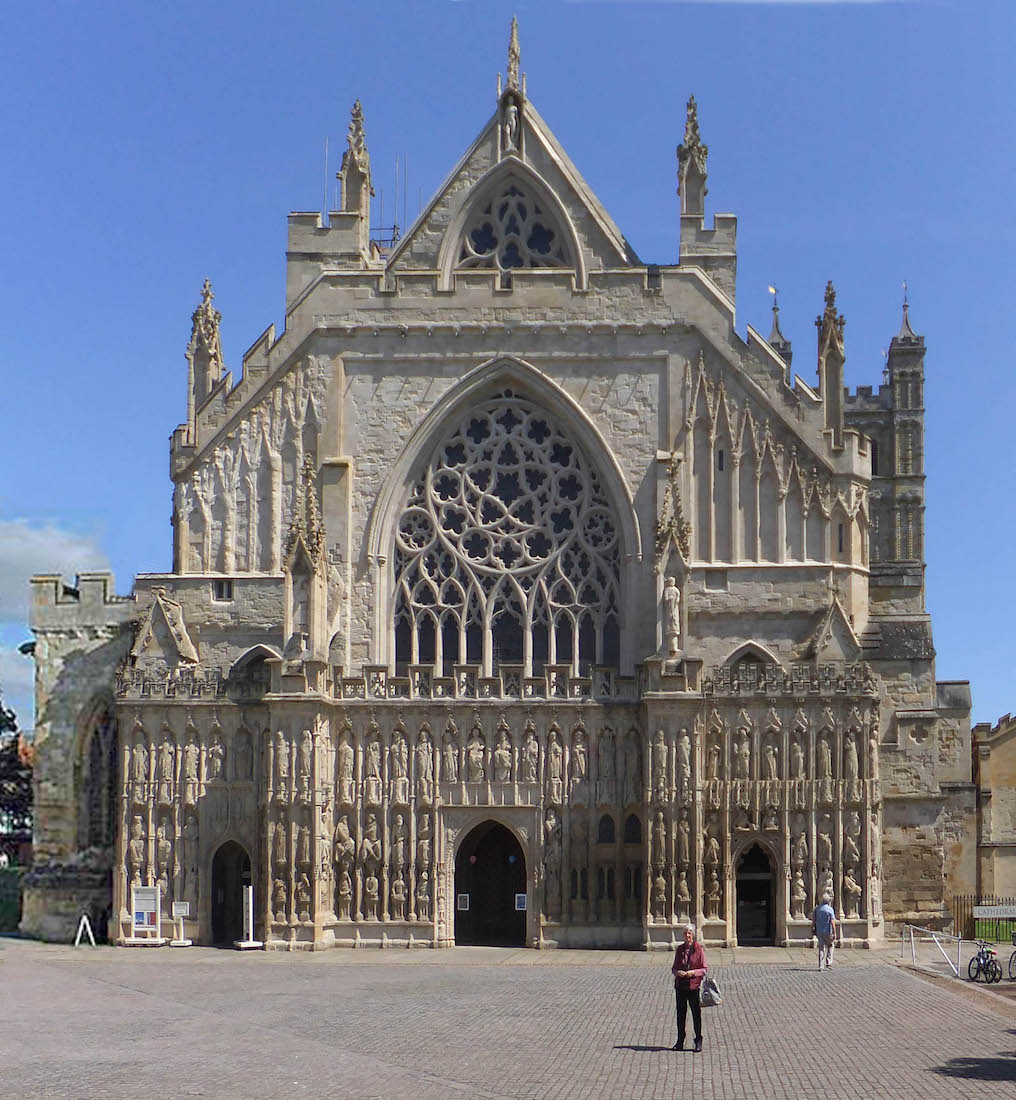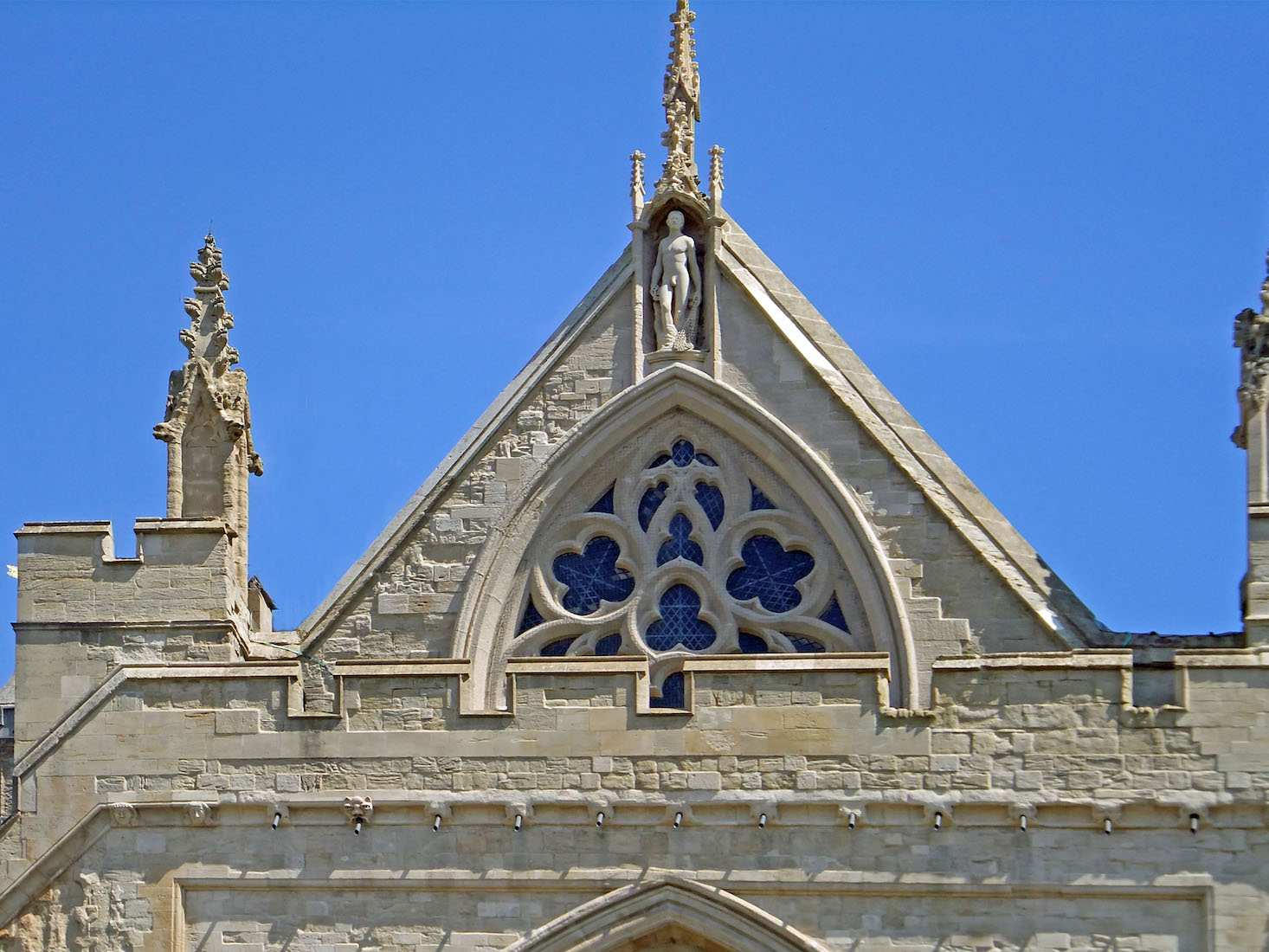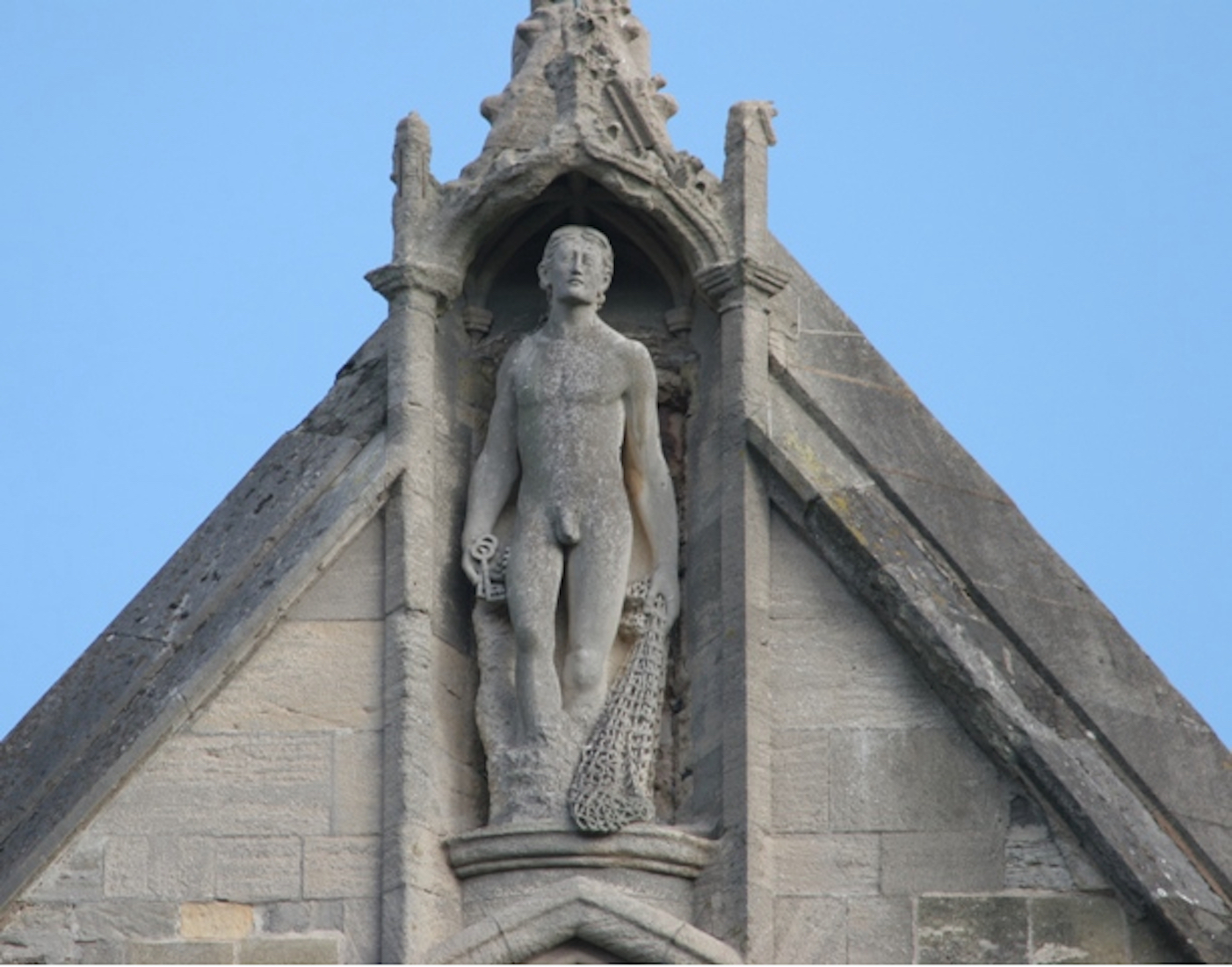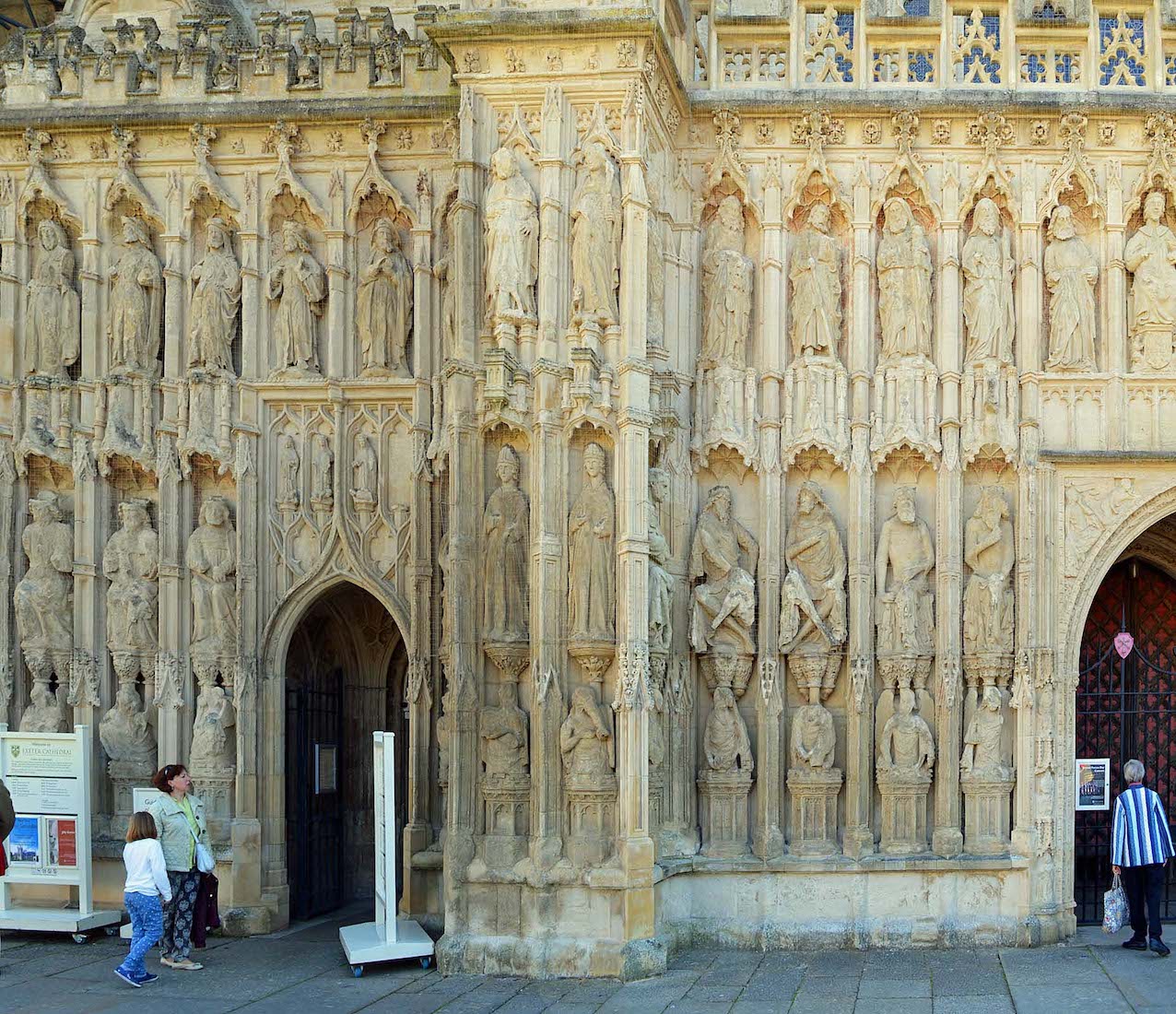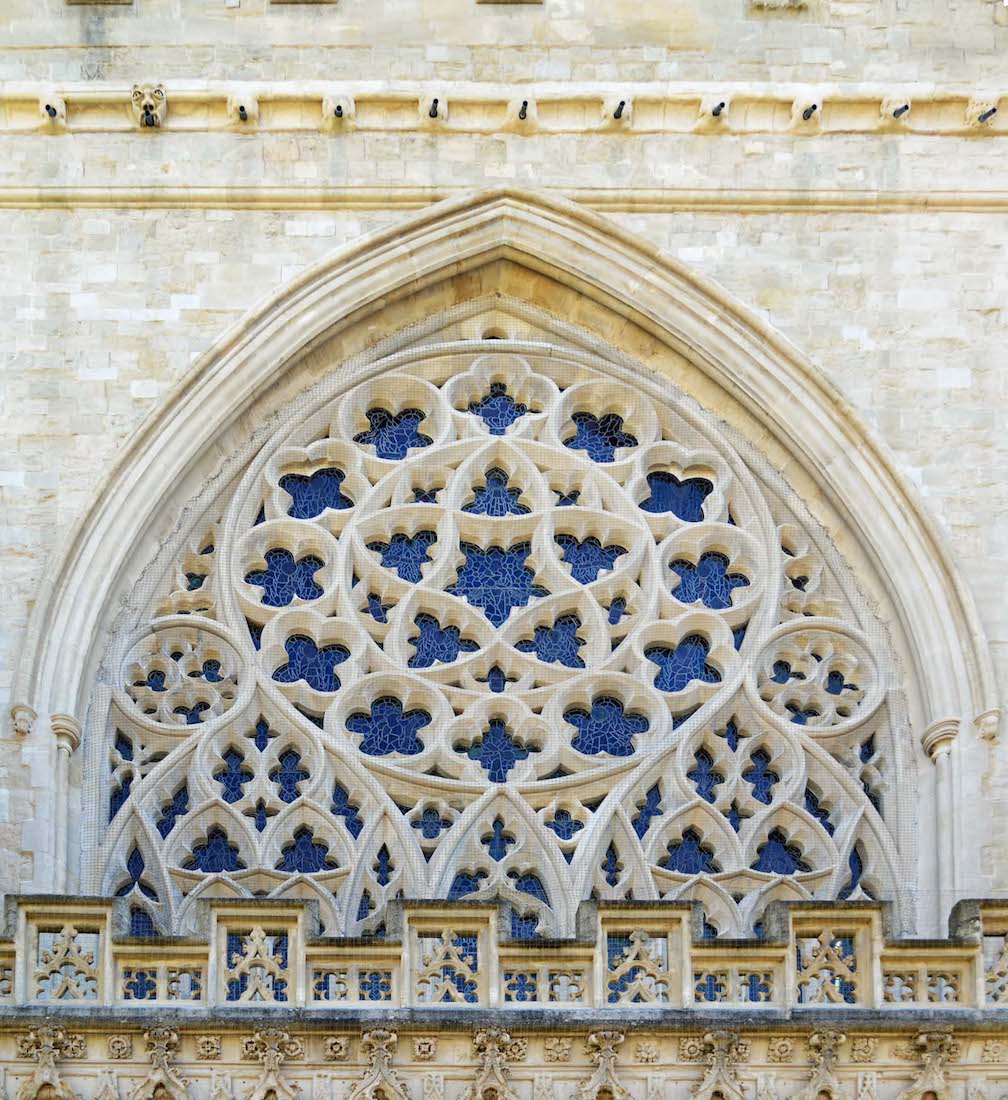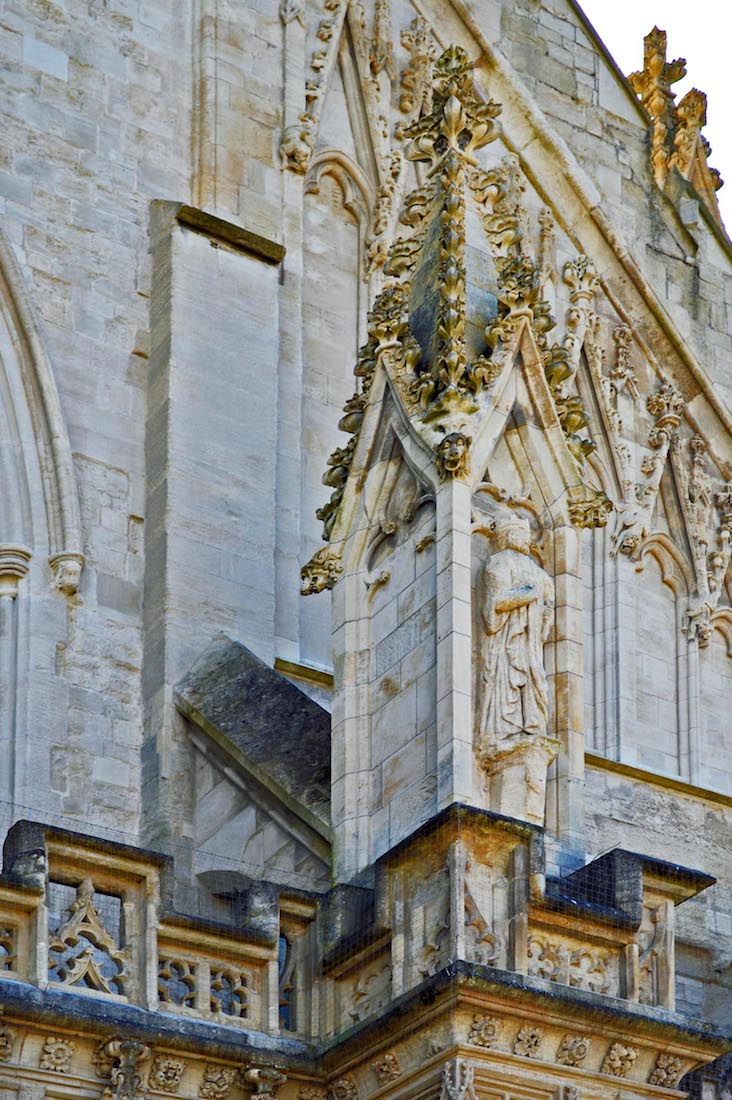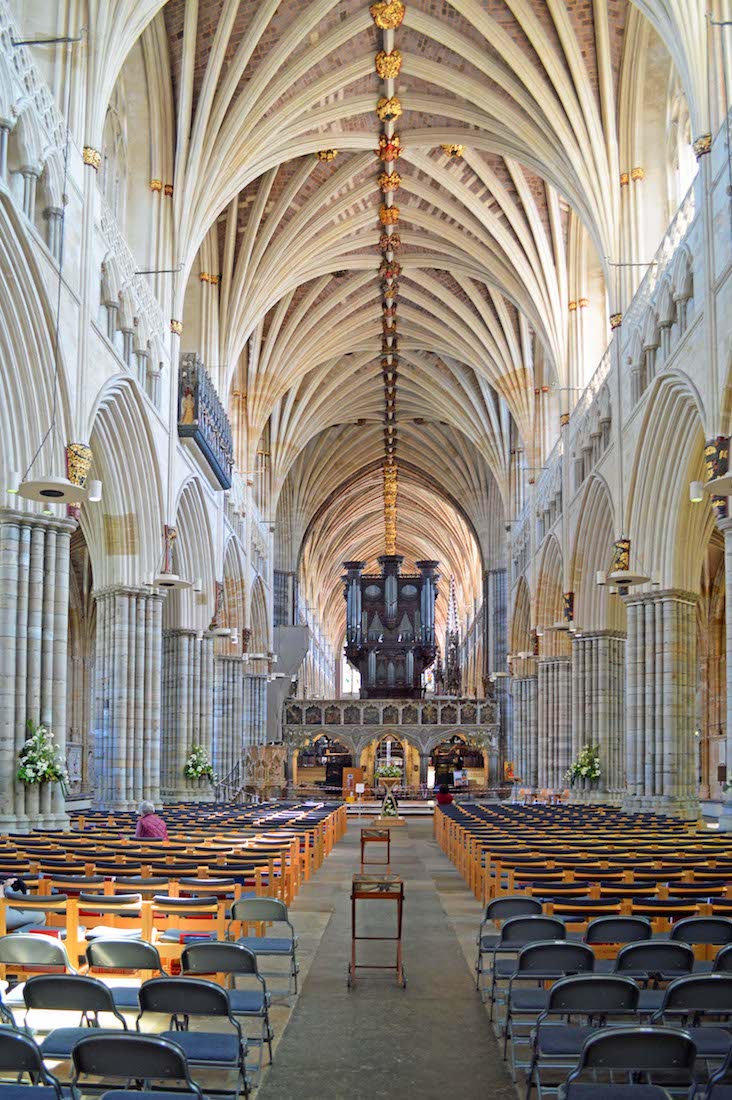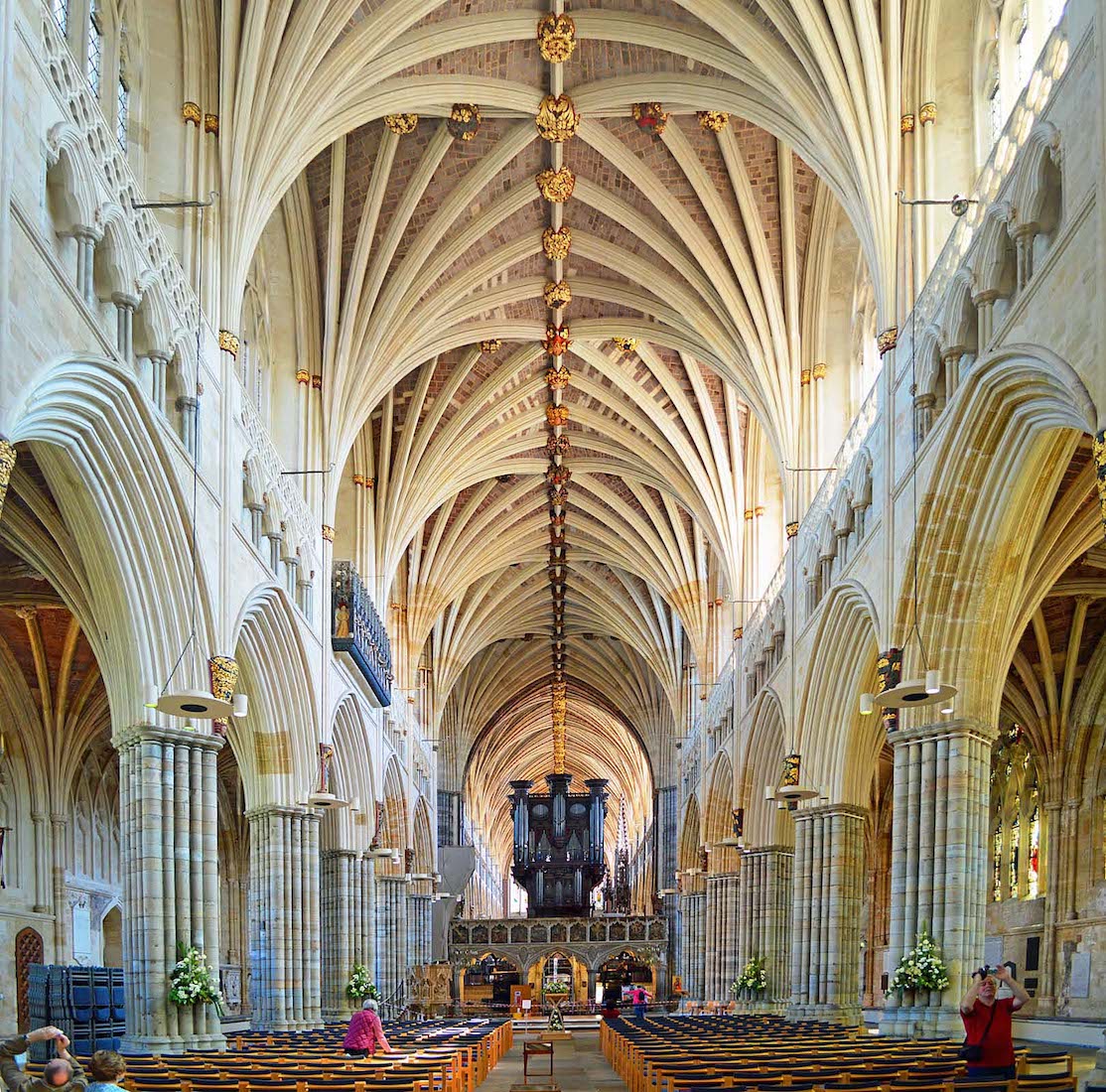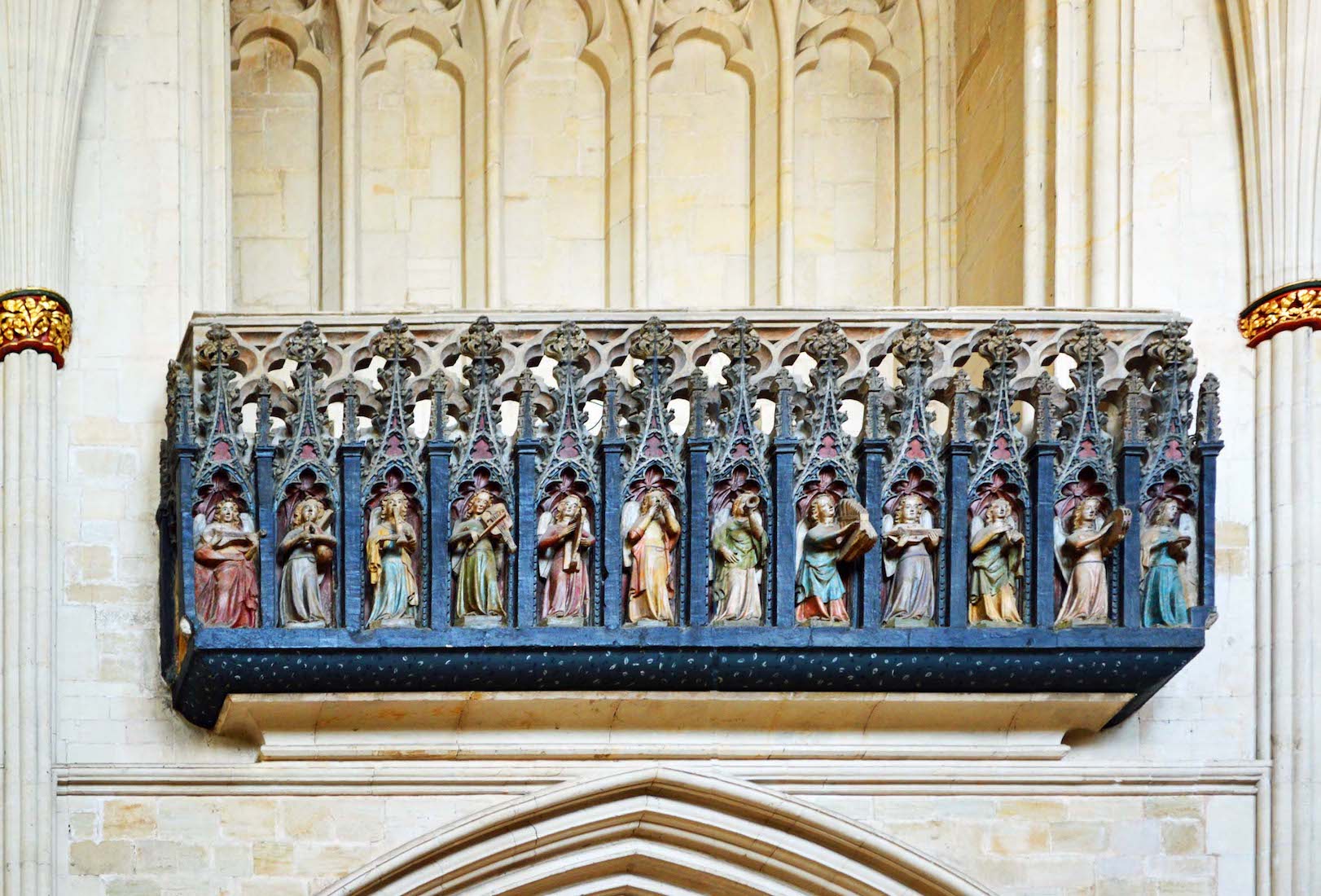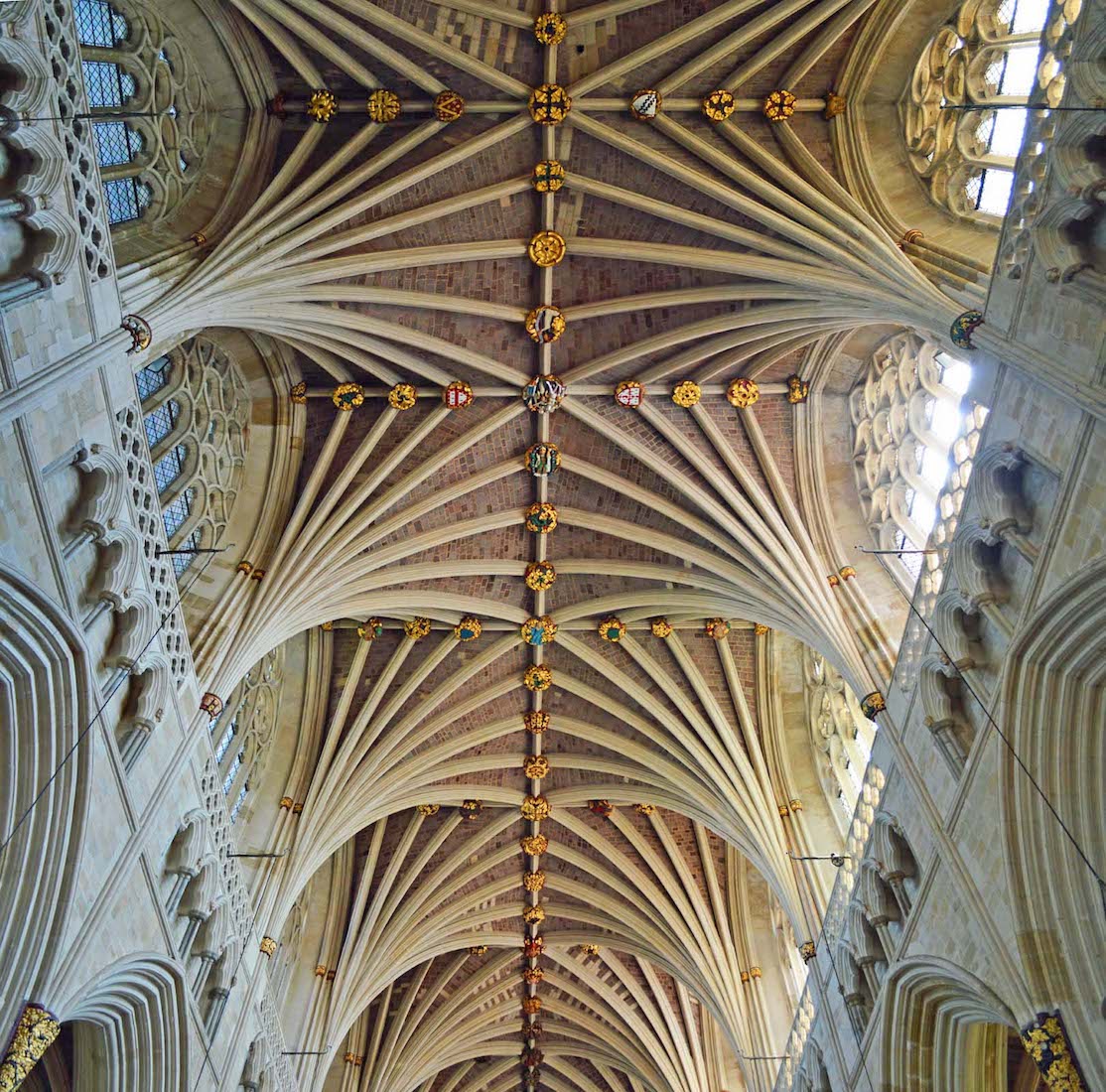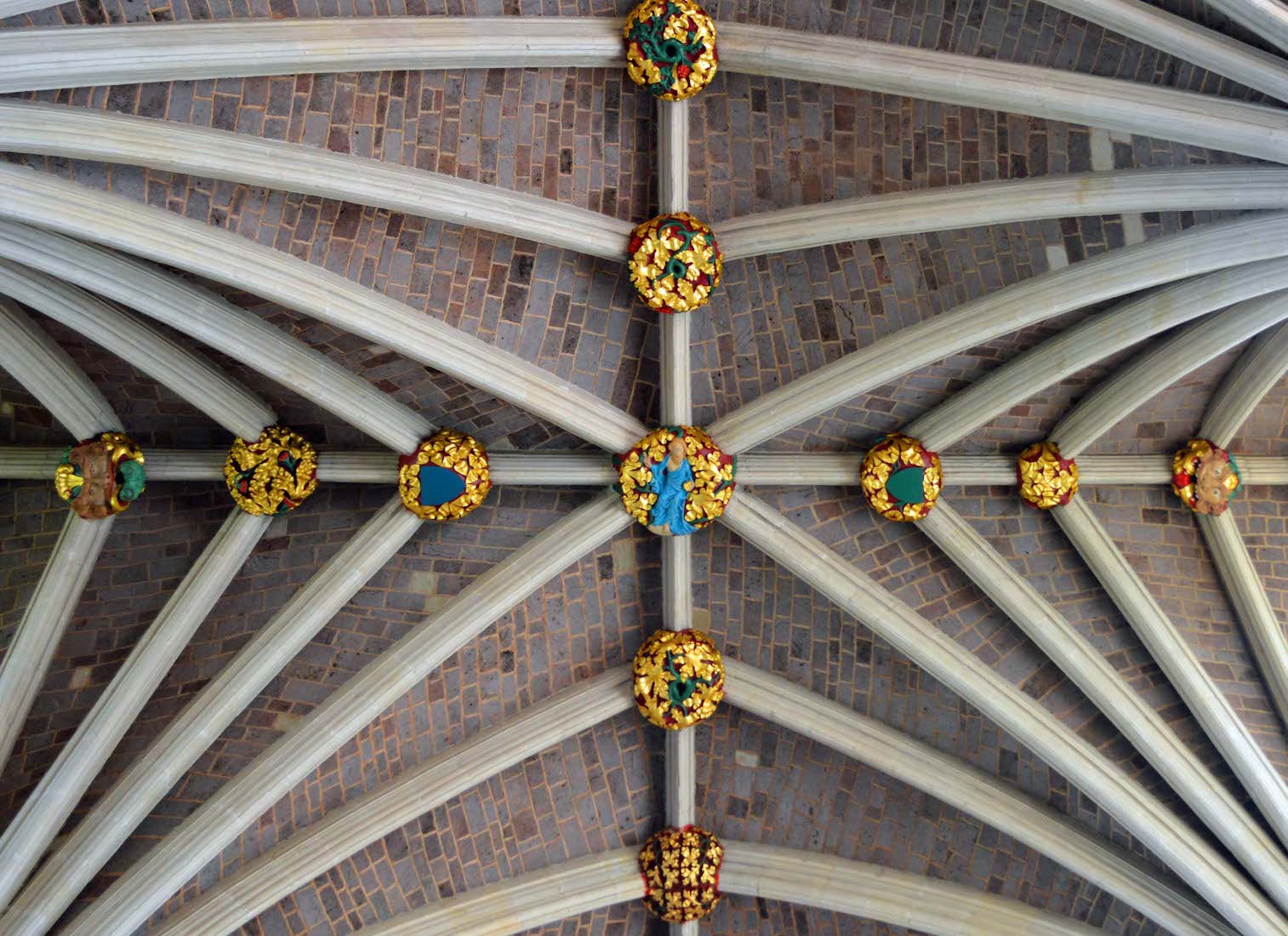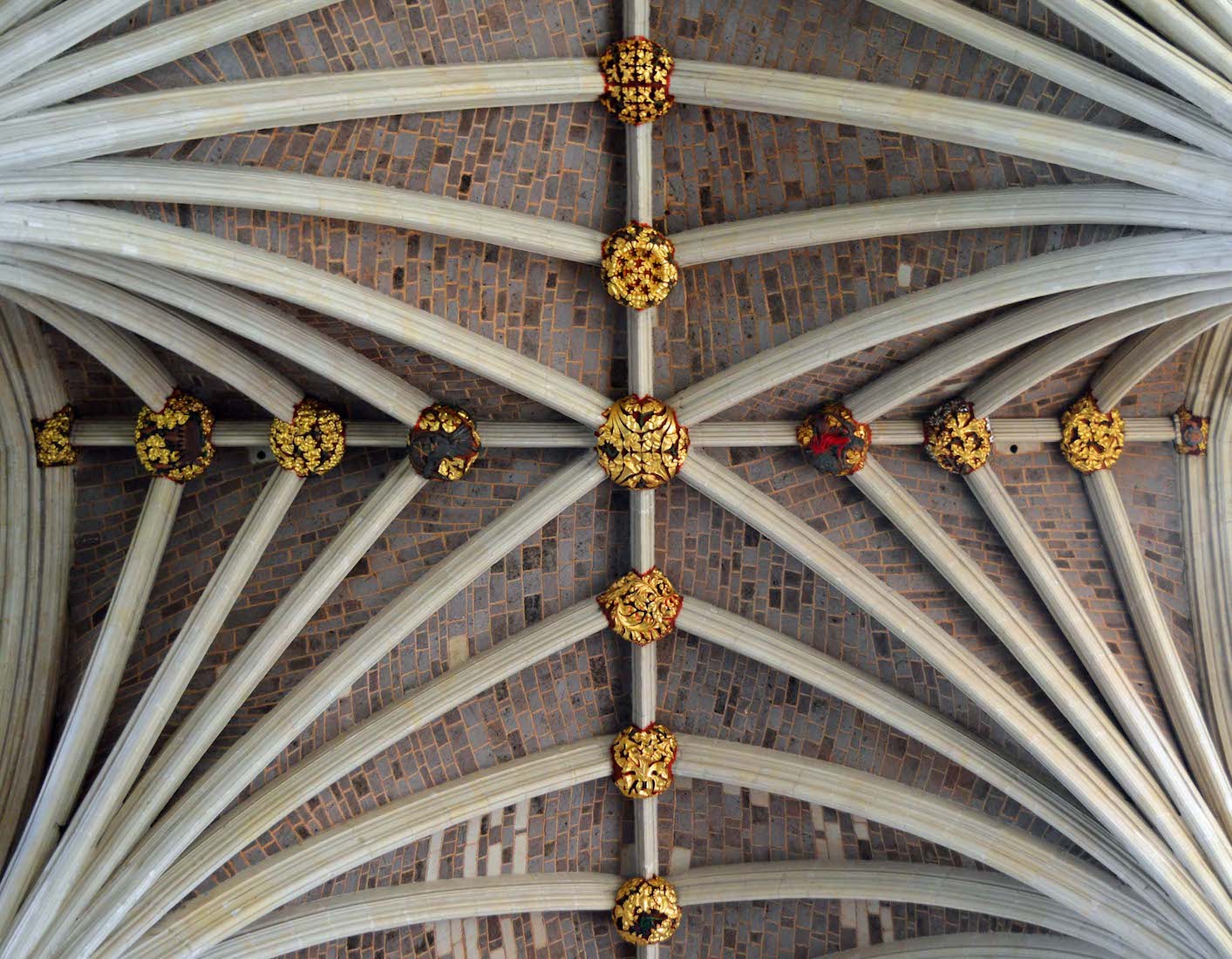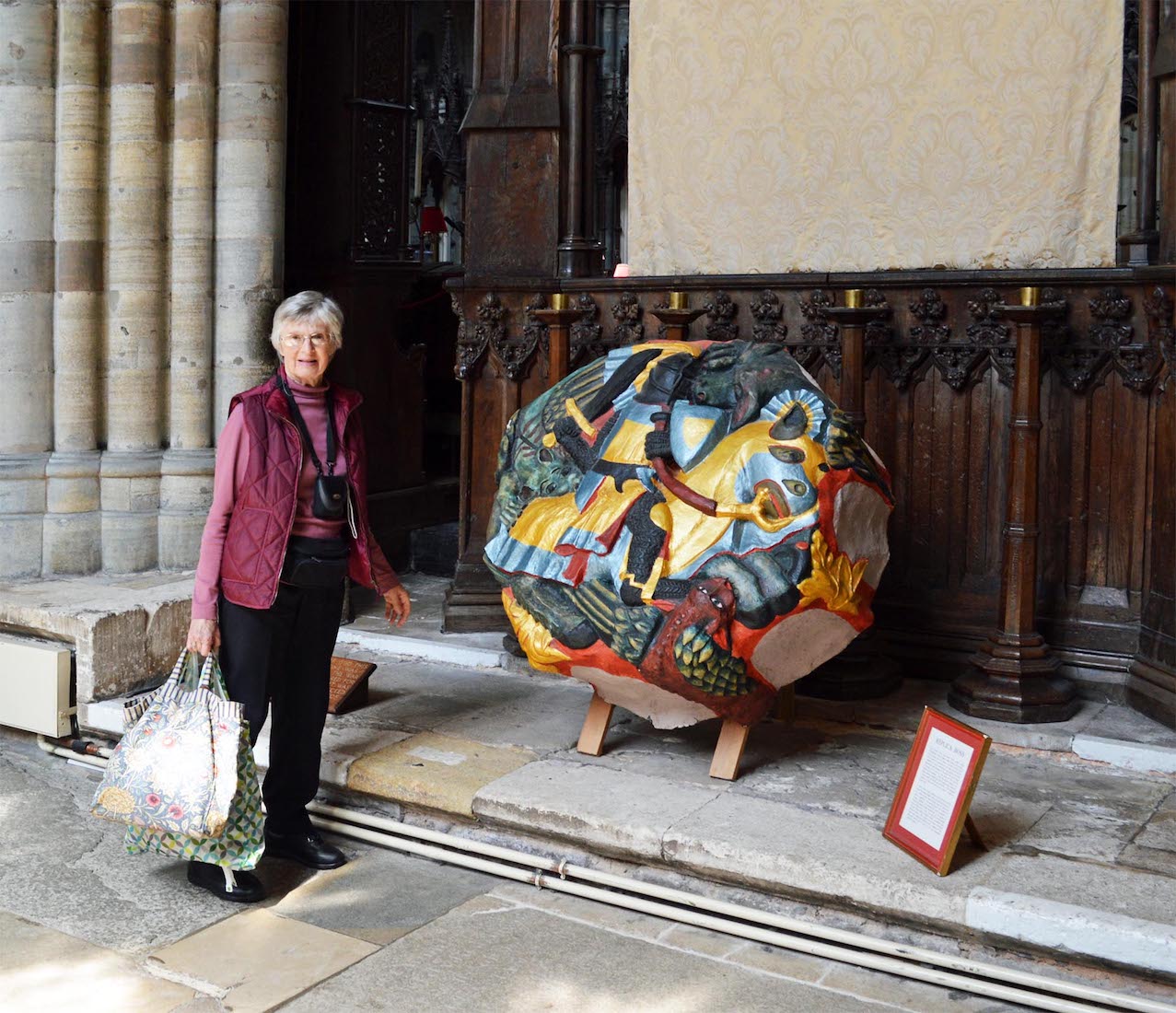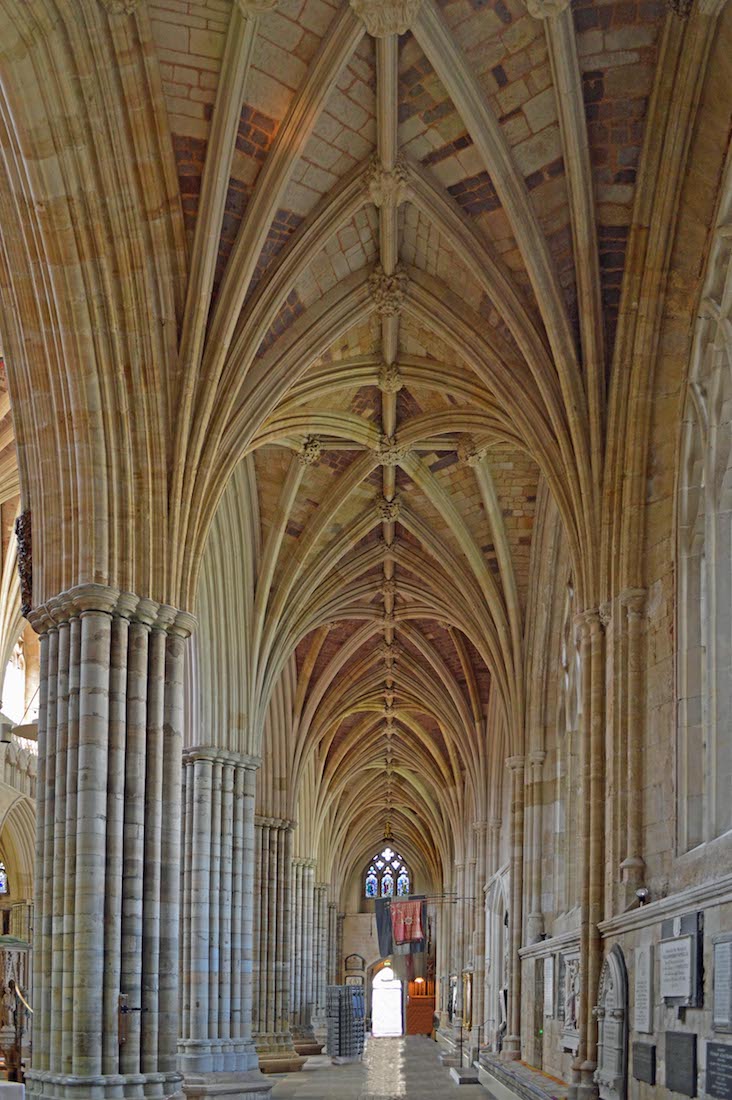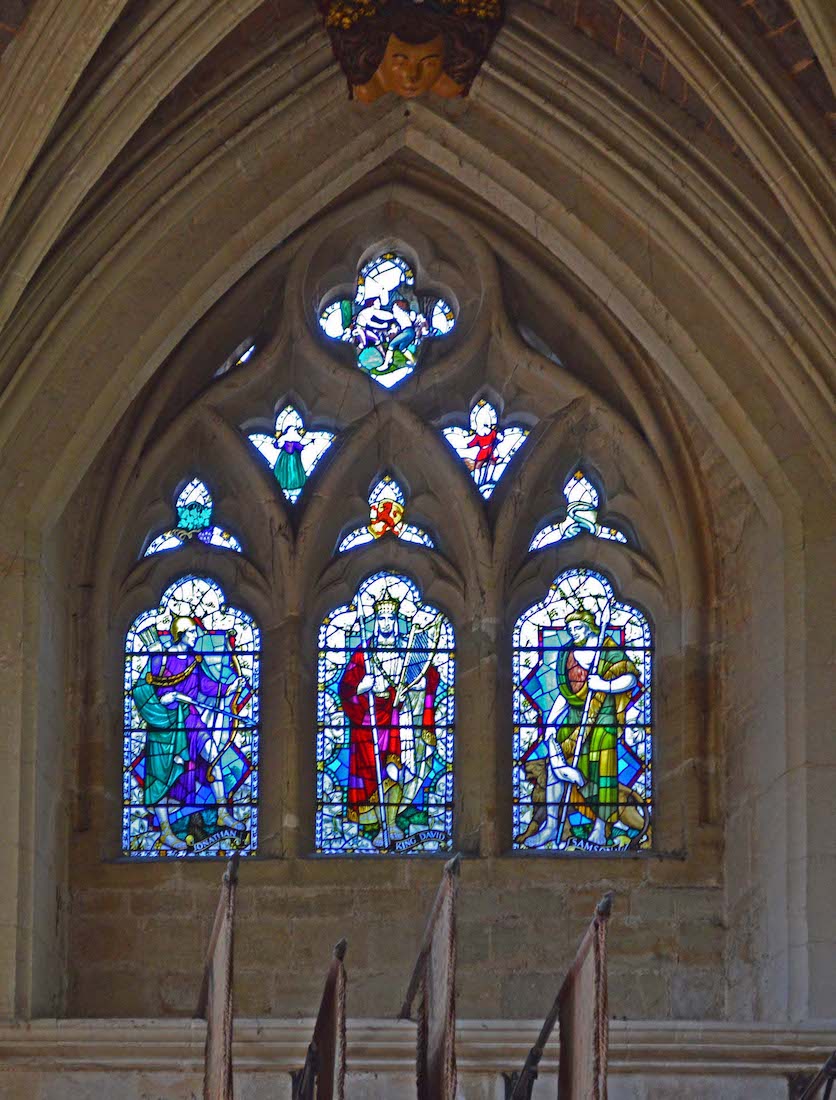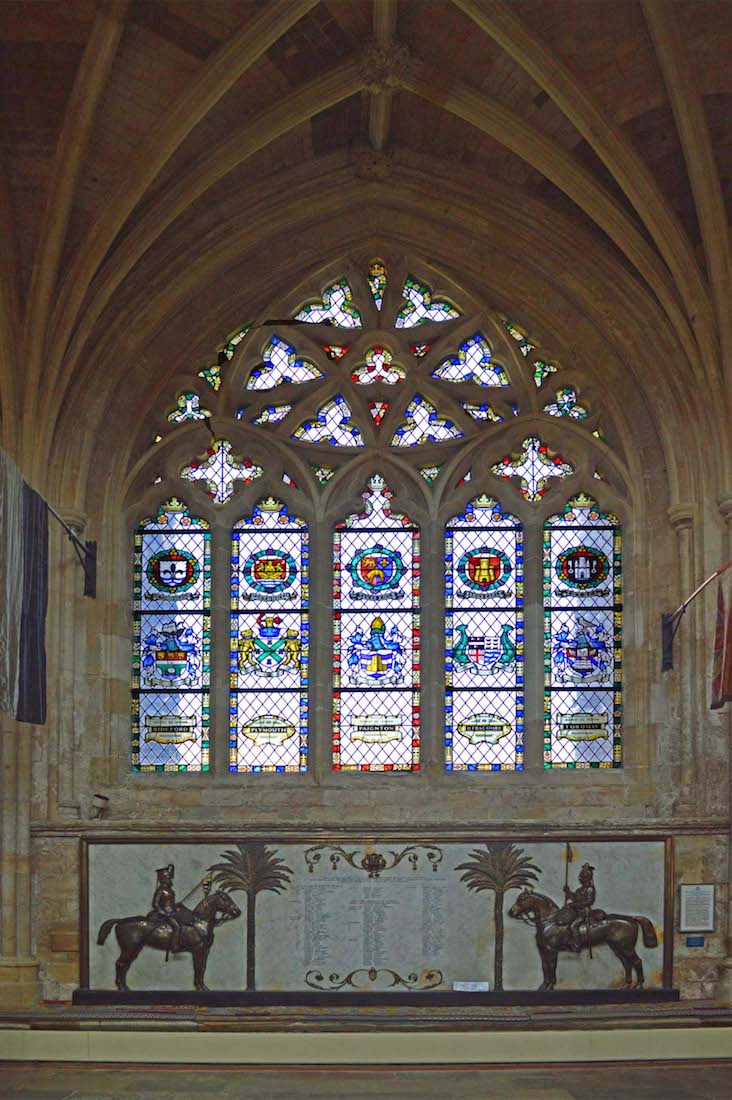21. SOUTH NAVE FROM WEST
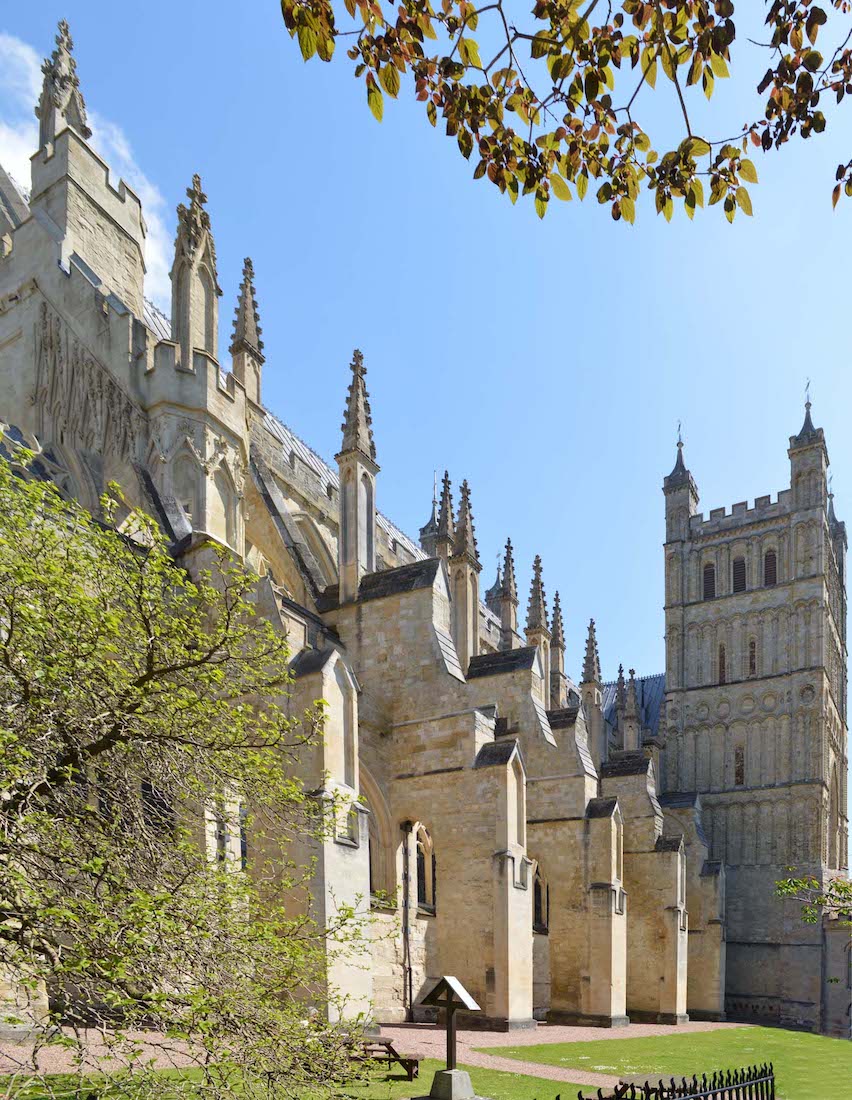
The slim buttresses reach upwards, with flying buttresses at the top, and all capped by slender pinnacles which reach heavenwards. Bravo! PLAN
22. SOUTH WEST PINNACLES
Pinnacles are a feature of Gothic architecture. The pinnacle had two purposes. The first was ornamental – adding to the loftiness and the vertical lines of the structure. They were sometimes capped with statues. The second was structural – the pinnacles were very heavy and often rectified with lead, in order to enable the flying buttresses to contain the stress of the vaults and roof. This was done by adding compressive stress (a result of the pinnacle weight) to the buttress, thus shifting the thrust on the buttress downwards rather than sideways.
23. WEST WALL
The West front was initially designed by the remarkable medieval craftsman Thomas of Witney. It is now dominated by two features – the West window and the colossal image screen containing large statues of kings, prophets and angels, described on the cathedral’s website as ‘one of the great architectural features of Medieval England’. The two lower tiers of sculptures are mostly from the mid 14th century. The upper tier (everything above the main doorway) largely dates to ca 1460–80, over a hundred years after the two lower tiers had been completed.
24. WEST WALL GABLE
In fact, the image screen was an afterthought. Vertical joints between the image screen and the west wall of the cathedral show that the image screen was never part of the west front's original architectural design. Thomas of Witney died c1342 and the image screen is believed to have been the conception of his successor, William Joy. At the top of the West Wall is a crenellated battlement with the apex of the gable behind. The gable features a sculpted nude figure above a small ornate window. Curiously, this window, like its counterpart at the East end, is not visible from inside the Cathedral.
25. ST PETER
Closer inspection reveals that the somewhat unflattering sculpture at the apex of the West Wall is St Peter. Exeter Cathedral is officially the Cathedral Church of St Peter at Exeter, and references to the Saint can be found throughout the Cathedral. Here we notice Peter holding a fishing net – an allusion to Matthew 4:18 in which Jesus called Peter and his brother Andrew while they were fishing. In his right hand Peter carries the keys to the Kingdom, as in Matthew 16:19 – a sign of the authority Jesus gives to Peter. [Cathedral photo]
26. WEST WALL NORTH
A prominent feature of Exeter Cathedral is the image screen on the West front. The image screen is not the Western wall of the nave but it actually covers the buttresses that support the West wall and also hides the North and South chambers that are external to the wall. The North chamber houses the new bread house for the daily distribution of the canon's bread-dole and the South chamber houses the tomb of Bishop Grandisson who was buried there in 1369.
27. WEST WALL SOUTH
The image screen contains many figures that cannot be identified. Some portray royalists and others portray saints. There is the image of William the Conqueror, Bishop Grandisson, and St. Boniface. Some of the images have deteriorated badly but others have been restored. The lower portion of the screen was completed for Bishop Grandisson. The rest of the screen was completed during the reign of Richard II (1370 – 1394). At one time the image screen was brightly painted in colour, but over the years the paint has worn off the figures. The figures are fragile and require a wire screen to keep the birds away.
28. WEST ROSE WINDOW
The dominant features of the West wall are the large screen and the West window. Unfortunately the screen covers all the west window except for the circular ‘rose‘ at the top. The structure of the rose is interesting: an inner curved star with five-fold symmetry, surrounded by a ring of twelve alternating quatrefoils and quintrefoils.
29. WEST PINNACLE
Before we go inside the Cathedral, a final look at the West pinnacle with its amazing detail.
30. NAVE 1
We now enter the Cathedral through the West door and gasp at the sight of this beautiful nave. Built in Late Decorated Gothic style over the years 1328 – 1369, it makes quite an impact. Above is the longest unbroken Gothic ceiling in the world, which stands at a height of 20m (66 ft) and stretches for 90m (300 ft). The nave is lined with two rows of Gothic arches, separating the outside aisles. The view through to the Quire is broken by the large dark organ with a screen below. Top left is the unusual decorative Minstrels’ Gallery.
31. NAVE 2
In this wider view of the nave we notice the colourful decorative touches at the tops of the columns. Front left is the ornate pulpit, and an icon is visible at front right. Below the massive organ is the pulpitum – a screen topped by a row of painted images. In the central aisle there are a couple of mirrors on stands, making it easier to admire the beauty of the roof.
32. MINSTRELS’ GALLERY
The minstrels’ gallery can be seen on the North side of the nave towards the front. It dates from around 1360 and is unique in English cathedrals. Its front is decorated with twelve carved and painted angels playing medieval musical instruments, including the cittern, bagpipe, hautboy, crwth, harp, trumpet, organ, guitar, tambourine and cymbals, with two others which are uncertain. The gallery provided a small space for a choir to sing.
33. NAVE ROOF
The roof of the nave is a particularly beautiful example of the ribbed vaulting, characteristic of Gothic buildings.
34. BOSSES 1
As we can see, each join of the ribbing is covered with a colourful carved ‘boss’. In architecture, a boss is a knob or protrusion of stone or wood. Bosses are often found in the ceilings of buildings, particularly at the intersections of a vault.
35. BOSSES 2
In Gothic architecture, roof bosses (or ceiling bosses) are often intricately carved with foliage, heraldic devices or other decorations. Many feature animals, birds, or human figures or faces, sometimes realistic, but often grotesque: the Green Man is a frequent subject. We see here examples of bosses with intricate designs and faces.
36. BOSSES!
It is easy to lose a sense of scale when viewing a Cathedral. We might look at the bosses on the nave roof and think of them as delightful little ornaments. But in fact, they are not little at all! This life sized boss can be found in the South Quire aisle.
37. NORTH AISLE LOOKING WEST
We begin our exploration of the Cathedral by looking at the West end of the North aisle of the nave. Like the main nave, the aisle is a work of art and a joy to behold.
38. NORTH AISLE WEST WINDOW
At the West end is a window with three main panels, below which hang several flags.
39. NORTH NAVE WINDOW 1
A little way along the North aisle of the nave we find this memorial panel, memorial window and flags. These are in remembrance of the members of the Queen’s Royal Lancers who died in India. Place names on the windows are Gt Torrington, Dartmouth, Tavistock, Barnstaple, Totnes, Plymouth, Paignton, Ilfracombe and Torquay.
40. NORTH NAVE PAINTING
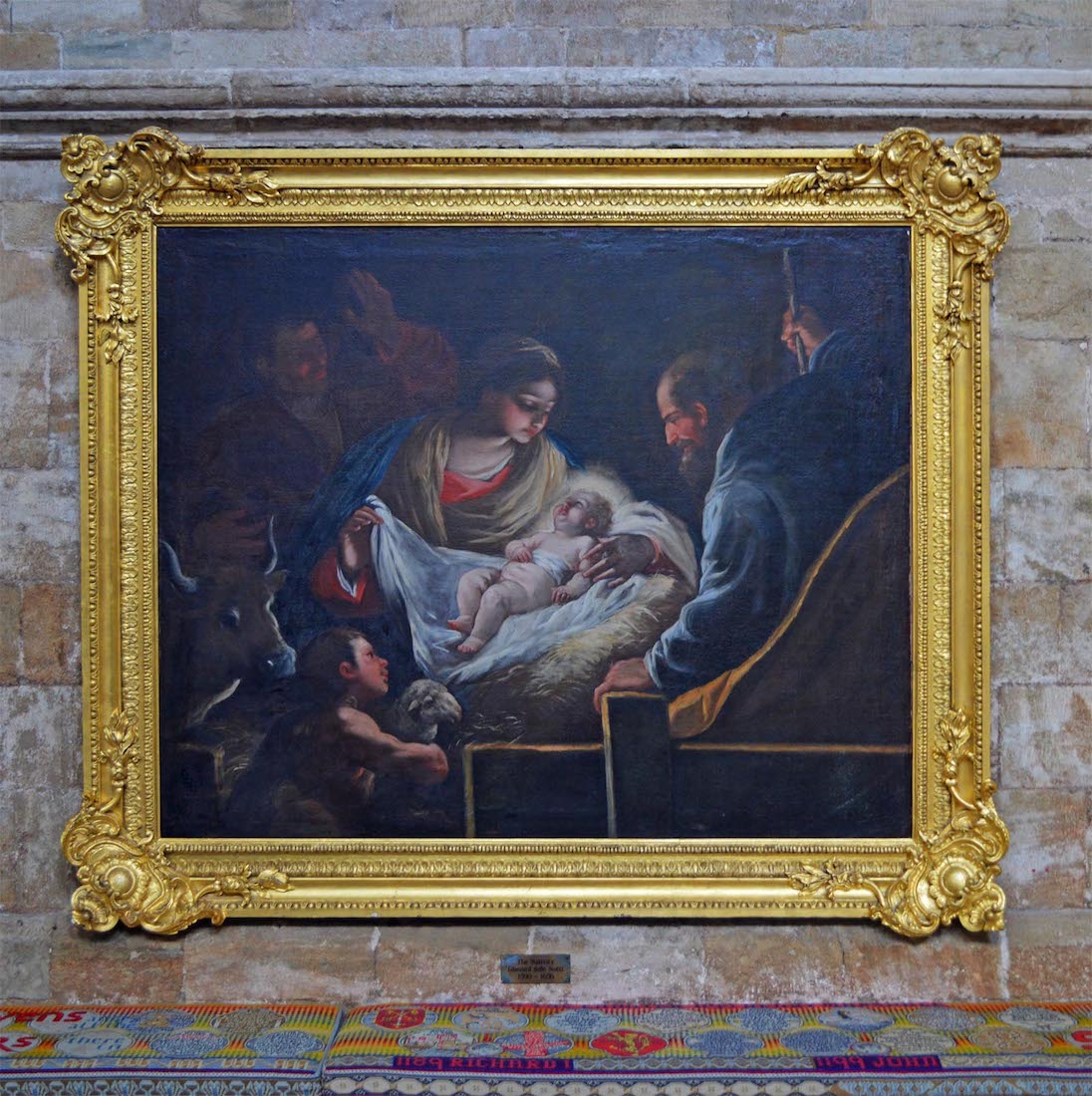
A little further along the aisle we come to this painting of the Nativity. The artist, Gerard van Honthorst (1592 – 1656) was a Dutch Golden Age painter. Early in his career he visited Rome, where he had great success painting in a style influenced by Caravaggio. Following his return to the Netherlands he became a leading portrait painter. He became especially noted for his depiction of artificially lit scenes, receiving the nickname ‘Gherardo delle Notti’ (Gerard of the night).


